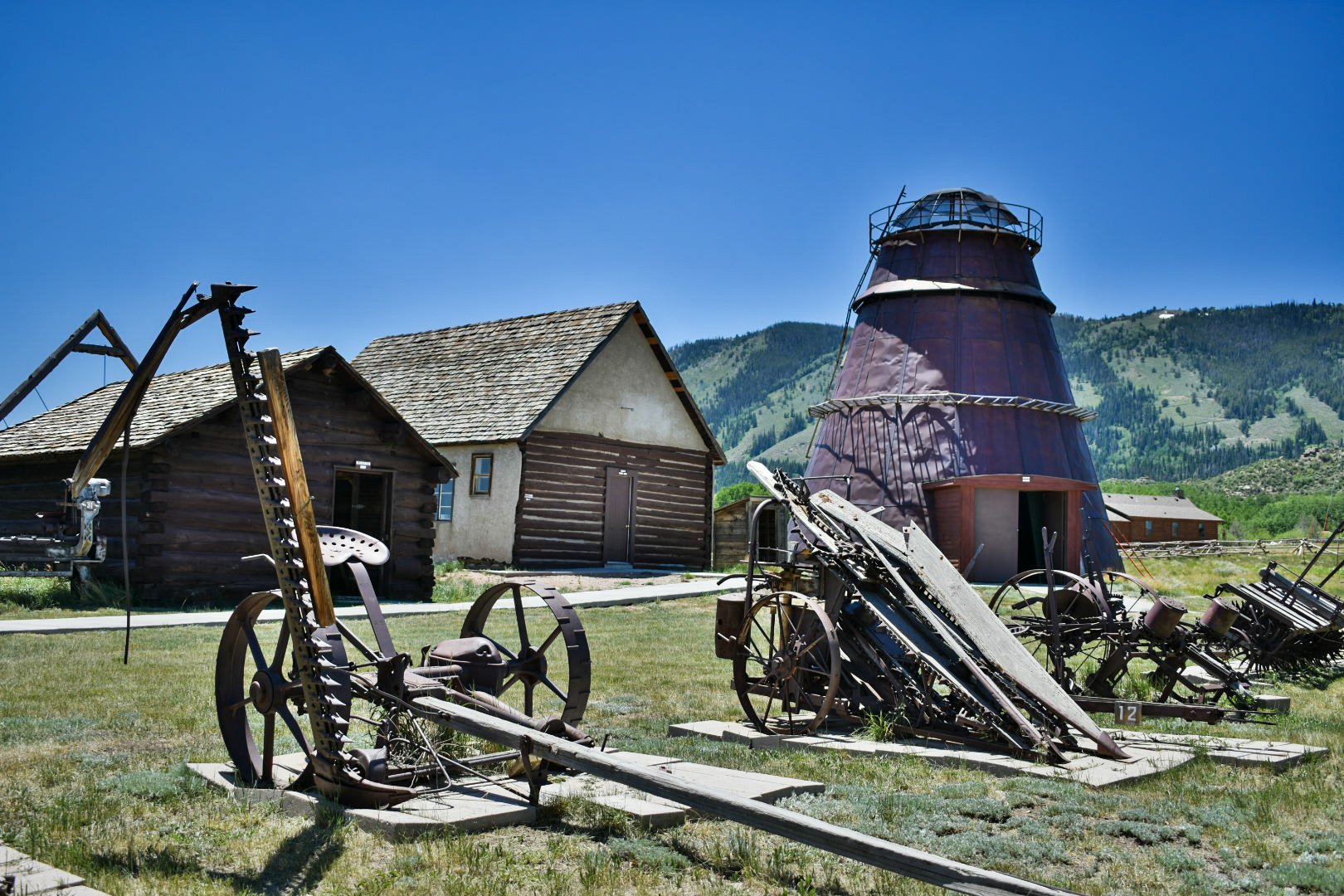
Exhibits
Railroading
From the early 1900’s up until the 1990’s there was a railroad line that ran from Laramie to Centennial and the area has a rich history and railroading culture. The museum showcases many artifacts and exhibits that allow you to experience what life was like on and off the rails. On the National Register of Historic Places, part of the museum’s exhibits are housed in the original Centennial Railroad Depot, dedicated on July 4, 1907. The museum’s buildings also include a 1944 Union Pacific Railroad caboose that has been preserved for you experience what life was like on the rails. The Engen Log Barn houses an original oak bench from the waiting room of the Historic Laramie Railroad Depot. There are many more railroad artifacts at the museum for you to explore and learn about.
Mining
Many pieces of mining equipment are on exhibit in the museum from the gold rush in the 19th Century. Gold was discovered in above Centennial in 1875 and several minerals were mined in the area, including platinum and copper. Many pieces of equipment used in those early mining operations have found their way to the museum preserving that iconic time period in American Western history.
Ranching
The museum houses many ranching and farming artifacts and historical photographs. The Jane Houston Carriage House was built on the grounds to house some of the larger pieces of ranching equipment in the museum’s collection. There is a large collection of historic tack and harnesses as well. One saddle was made by a prisoner in the Wyoming Territorial Prison, and was used by the cowboys who settled on ranches in the Centennial Valley in the late 1800’s. Many of those ranches still exist today, a few in the same families. There is a hay baler that sits in front of the carriage house as well as a replica wagon that sits to the east of the barn.
Lumber and Logging
The museum features many historical artifacts from when the lumber and logging industry was booming in Centennial. There is a beehive burner that was built from scratch in the 1920’s that was used locally as part of lumber operations through the 1950’s among many other artifacts. There are also numerous collections of historic photographs from the 1900’s showing early loggers in Centennial.
Early Western Lifestyle
The museum features multiple exhibits and artifacts that let you experience what Western life would have been like living in Centennial, Wyoming in the early 1900’s. There is a turn of the century wood fired stove, kitchen and bedroom in the main depot museum as well as a former Recreation Camp cabin set up like it would have been for early guests. The Engen Log Barn houses a laundry exhibit as well as early skies and snow shows used to get around. The carriage house is home to a 1917 fire engine that was used in the communities early days.
Cultural History
Multiple collections of old historic photographs showcase what the social and cultural life was like for Centennial community members over the last 100 years. There are multiple articles and artifacts from the Centennial Social Club, founded in 1920 and still active today, as well as quilts and other writings. Exhibits include a "snowmobile" that was custom built from a tractor rigged up to be on skis, and used by a current local resident in the 1960s to get from his home to school in the harsh winter months.
Regional History
Exhibits include a variety of historical artifacts and educational displays showcasing early Native American lifestyle and culture in the region as well as the local wildlife and animals in the valley.
Schoolhouse
The one room school house was used from the early 1900s until the early 1960s. It has been preserved so you can experience what education was like for students in the early days of the American West.
Blacksmith Shop
Housed in a historic log building that was the former fire station, the blacksmith shop has been converted into a realistic exhibit depicting what turn-of-the-century blacksmithing looked like. Experience what it would be like first hand and explore the tools and equipment that used to be used.









